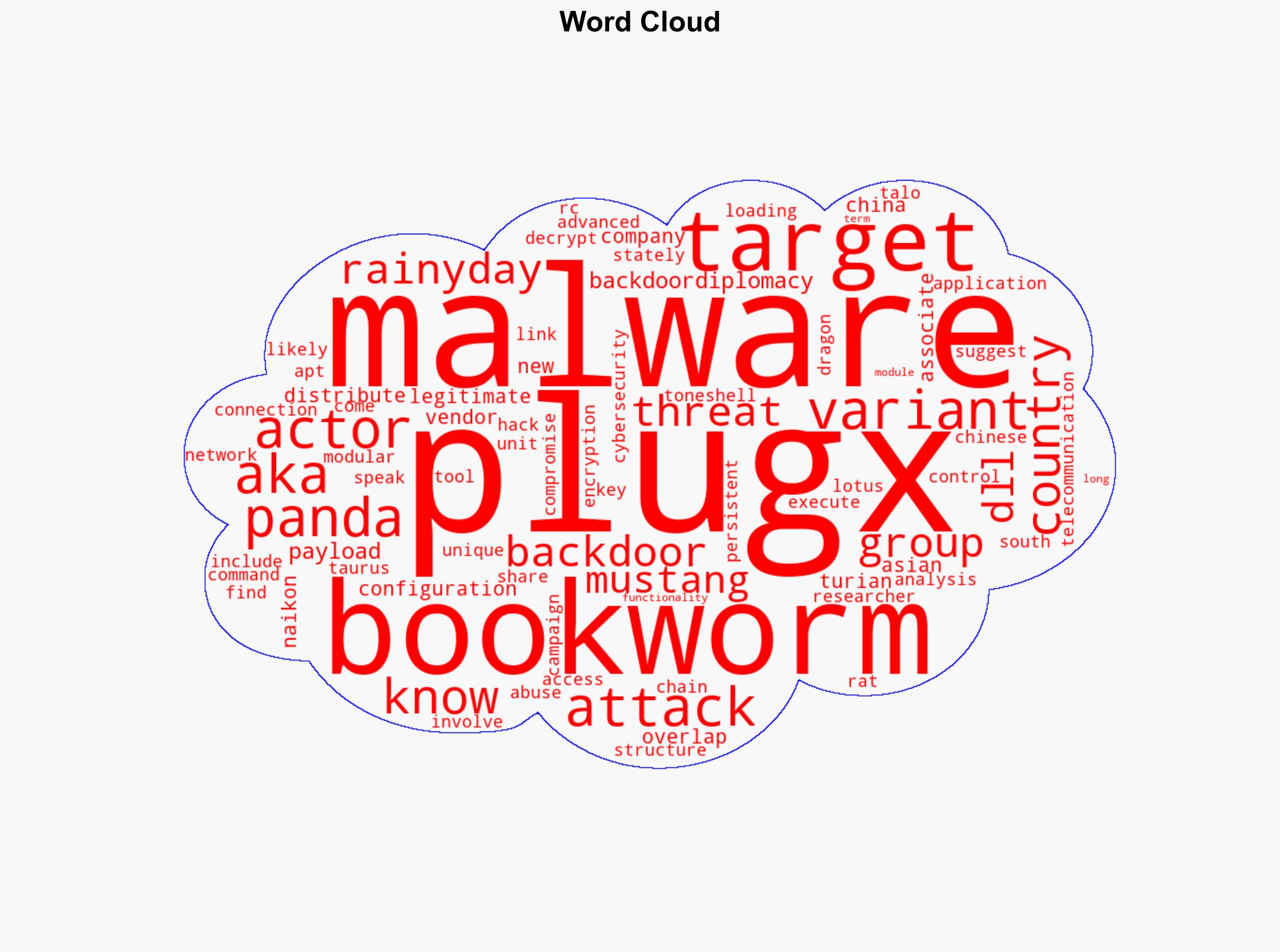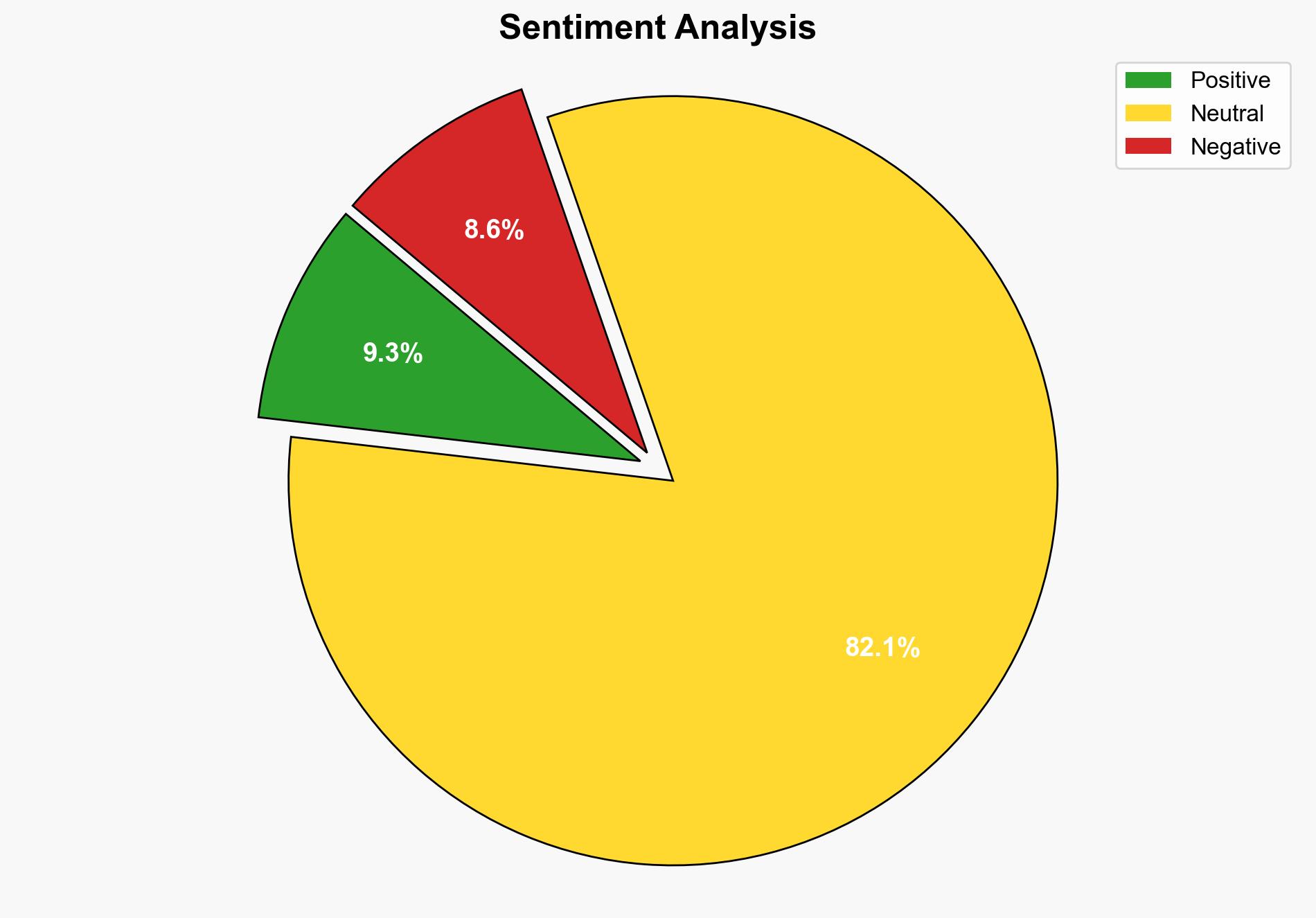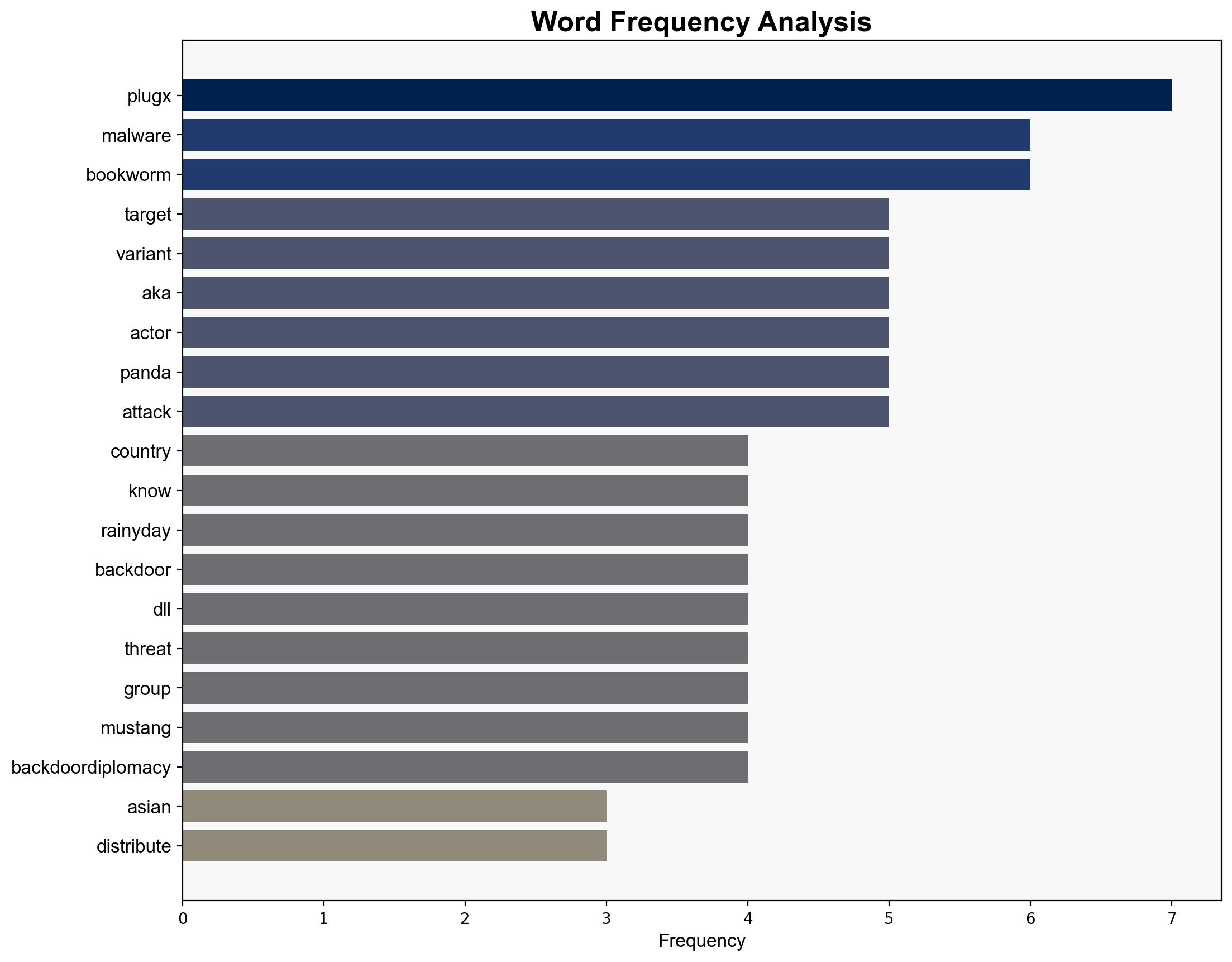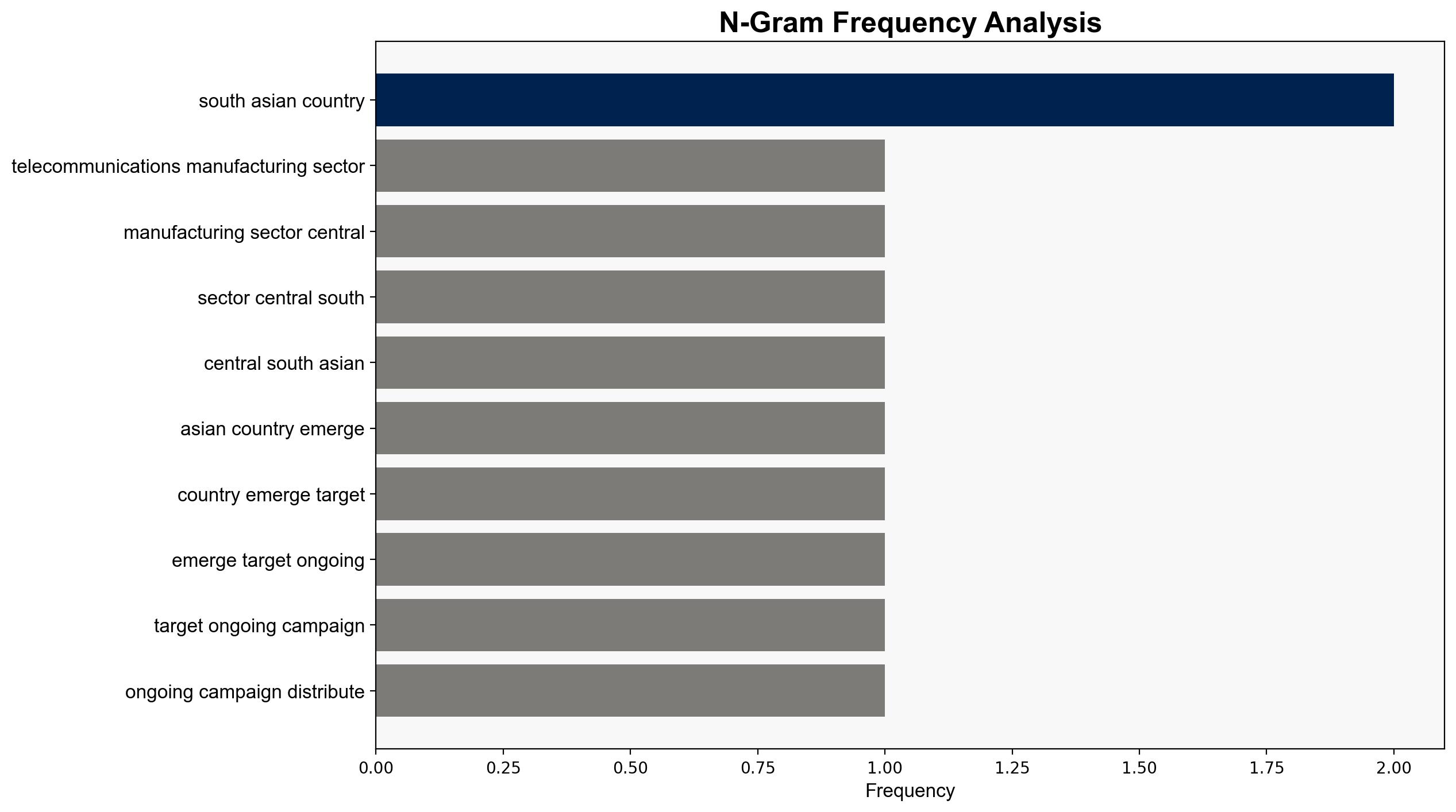China-Linked PlugX and Bookworm Malware Attacks Target Asian Telecom and ASEAN Networks – Internet
Published on: 2025-09-27
Intelligence Report: China-Linked PlugX and Bookworm Malware Attacks Target Asian Telecom and ASEAN Networks – Internet
1. BLUF (Bottom Line Up Front)
The most supported hypothesis is that Chinese state-aligned Advanced Persistent Threat (APT) groups, specifically Mustang Panda and Naikon, are conducting coordinated cyber operations targeting telecommunications and ASEAN networks using PlugX and Bookworm malware. Confidence level is moderate due to overlapping technical indicators and historical patterns of behavior. Recommended actions include enhancing cybersecurity measures in targeted sectors and fostering international cooperation for threat intelligence sharing.
2. Competing Hypotheses
1. **Hypothesis A**: Chinese APT groups, specifically Mustang Panda and Naikon, are orchestrating these attacks to gather intelligence and exert influence over telecommunications and ASEAN networks, leveraging PlugX and Bookworm malware.
2. **Hypothesis B**: Non-state actors or independent cybercriminal groups are mimicking Chinese APT tactics and using similar malware to obscure their identity and objectives, potentially for financial gain or to disrupt regional stability.
Using the Analysis of Competing Hypotheses (ACH) 2.0, Hypothesis A is better supported due to the consistent use of malware variants historically linked to Chinese APTs, the strategic targeting of telecommunications, and the technical overlap with known Chinese cyber operations.
3. Key Assumptions and Red Flags
– **Assumptions**: It is assumed that the technical indicators (e.g., malware signatures, encryption methods) are reliable and that the attribution to Chinese APTs is accurate.
– **Red Flags**: The possibility of false flag operations by non-state actors could mislead attribution. Limited visibility into the full scope of the attack infrastructure may obscure the complete picture.
– **Blind Spots**: The potential involvement of other state actors or third-party contractors is not fully explored.
4. Implications and Strategic Risks
The ongoing cyber operations pose significant risks to regional stability and economic security. The targeting of telecommunications infrastructure could lead to information breaches, operational disruptions, and increased geopolitical tensions. The potential for escalation exists if these attacks are perceived as state-sponsored aggression, prompting retaliatory actions or increased cyber defenses by affected nations.
5. Recommendations and Outlook
- Enhance cybersecurity protocols in telecommunications and critical infrastructure sectors, focusing on detecting and mitigating PlugX and Bookworm malware.
- Strengthen international collaboration for threat intelligence sharing and joint response initiatives.
- Scenario Projections:
- **Best Case**: Improved defenses deter future attacks, and diplomatic efforts reduce tensions.
- **Worst Case**: Escalation of cyber operations leads to significant disruptions and geopolitical conflict.
- **Most Likely**: Continued low-level cyber operations with periodic spikes in activity as defenses improve.
6. Key Individuals and Entities
– Joey Chen and Takahiro Takeda, researchers at Cisco Talos, provided analysis of the malware.
– Mustang Panda and Naikon, identified as key threat actors in the operations.
7. Thematic Tags
national security threats, cybersecurity, counter-terrorism, regional focus




